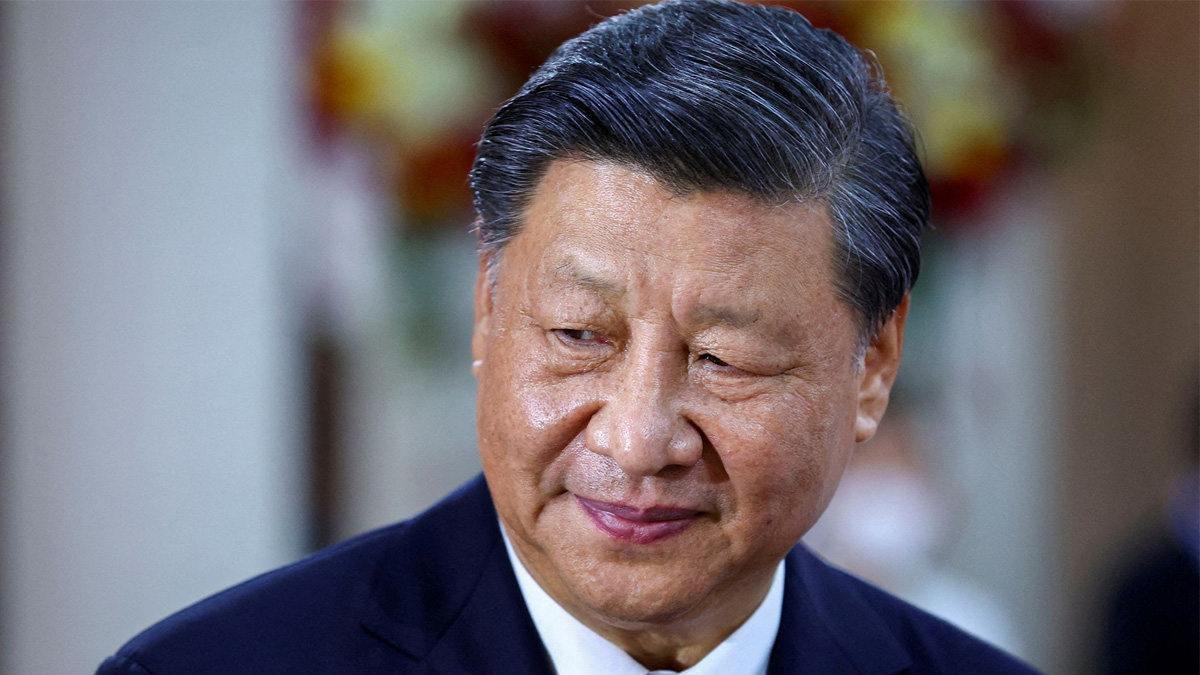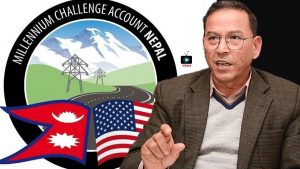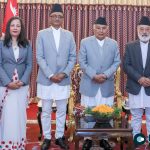
Experts Warn: China’s BRI Strategy Targets South Asia for Military, Economic, and Political Dominance

The projects under Belt and Road Initiative (BRI) by China are aimed at building military, economic and political hegemony across South Asia, said subject experts while interacting at a virtual seminar titled ‘China’s growing inroads into South Asia’. They made the remarks at an event organised by London-based NGO The Democracy Forum (TDF) on Wednesday.
This key geopolitical issue has been given added prominence, noted TDF President Lord Bruce, by the recent ASEAN conference in Indonesia, during which Indonesian foreign minister Retno Marsudi highlighted the systemic difficulties undermining trust between member states and the ‘sharpening rivalry’ that continues to divide the region. With the region also hosting numerous potential flashpoints, this challenge is becoming more complicated, and Marsudi encouraged participants to ‘strengthen preventative diplomacy’.
Of the eight countries forming the South Asian bloc, all are undoubtedly affected by China’s growing inroads in this region, with the BRI in South Asia involving subsidiary programmes such as the China-Pakistan Economic Corridor (CPEC); the Bangladesh-China-India-Myanmar Economic Corridor (BCIM); the Trans-Himalaya Corridor; and cooperation with Bangladesh, Sri Lanka, and the Maldives under the 21st century Maritime Silk Road. However, it is the relationship between India and China which continues to dominate any calculation of the balance of power in South Asia, said Lord Bruce, as each pursues policies aimed at building military, economic and political hegemony across the region.
Attending the Jakarta forum, Indian foreign minister Subrahmanyam Jaishankar held a meeting with recently re-appointed Chinese foreign minister Wang Yi, at which he addressed the military tension along the Line of Actual Control in Ladakh, where frontier forces sustained many casualties following clashes in June 2020 and January 2021. As a prerequisite to returning to normalcy in bilateral relations, Jaishankar made it clear that China needs to demilitarise the LAC to prevent flashpoints from recurring. Lord Bruce also referenced a research paper published by the Stockholm Center, which details the methods used by China in pursuing its foreign policy, where its diplomats downplay any friction with India while the PLA ‘maintains protracted and calculated tensions over…disputed boundaries’.
Thus the recent outbreak of aggression on the LAC provides clear evidence of a twin-track strategy, where in the first instance the Chinese government has attempted to ‘derail the boundary negotiation process as part of a calculated conflict that requires constant diplomatic attention from India…potentially distracting the country from other priorities in the region’, and secondly, where the CCP ‘attempts to create a strategic divide between India and other South Asian countries…by trying to create dependencies on Chinese investment’. Panellist Sadia Sulaiman, an Assistant Professor at Islamabad’s Quaid-i-Azam University, addressed efforts to expand the China-Pakistan Economic Corridor project into Afghanistan, assessing both the potential benefits and challenges for all the stakeholders. While CPEC was initially expected to offer diverse economic, health and education opportunities – a ‘Marshall Plan’ for the people of Pakistan – today it is fraught with delays due to China’s reluctance to reschedule Pakistan’s debt, as well as prospects of civil war in Afghanistan.
Although expanding the project could be good for Afghanistan, it faces four core challenges, namely the complex geopolitical scenario of the country and region, with numerous bilateral and multilateral tensions fomenting mistrust and hence preventing greater connectivity between states; persistent domestic instability in Afghanistan itself – including economic, political, and humanitarian crises, as well as rights abuses – which has led to the international community’s lack of engagement with Afghanistan (including even Pakistan, previously a main Taliban supporter); political and economic instability within Pakistan; and China’s lack of experience in engaging with values-based socio-economic situations in the region. If CPEC could bring a trickle-down effect for the people of the region, said Sulaiman, and were to be implemented in the true spirit in which it was instigated, it could reap real benefits in the fields of with health, education, transportation. However, she concluded, it has yet to be seen how it will unfold in the face of the aforementioned challenges.
China’s infrastructure diplomacy and growing influence in Sri Lanka was the focus for Asanga Abeyagoonasekera, a Senior Fellow and Executive Director of the South Asia Foresight Network (SAFN) at the Millennium Project in Washington DC. He wondered at the extent of Beijing’s involvement in Sri Lanka’s ongoing political and economic crisis, arguing that, while China was not the only cause, it was a considerable one, due to three main factors: unsustainable projects, such as the Hambantota Port, with no revenue to repay large Chinese loans at high interest rates; no proper oversight, given the informality of the processes, which helps to capture political elites; and China’s ‘strategic trap’ in Sri Lanka, including funding for Sri Lanka’s corrupt political parties, military and security assistance, and reciprocal support regarding both countries’ human rights abuses. So, in fewer than two years, Sri Lanka has shifted from a democratic to an autocratic model. Regarding Sri Lanka’s domestic political environment, large numbers of military appointments in the government has allowed for heavy militarisation. This is supported by only one country – China. Abeyagoonasekera also addressed how nations such as Sri Lanka, Nepal and Pakistan either support China on its Xinjiang policies, the Hong Kong National Security Laws, its stance on the South China Sea, etc, or remain neutral, since their dependence on, or indebtedness to, China means they do not take the route of values-based policies. So China has managed to gain influence in the region through its capture of political elites and soft power diplomacy, with only India exempt from vulnerability to democratic backsliding.
Considering China’s influence, past and present, in South Asia’s two micro-states, Bhutan and the Maldives, was Aditya Shivamurthy of the Observer Research Foundation’s Strategic Studies Programme. He spoke of the Maldives’ important position in the Indo-Pacific sea line, and how, given the significant relationship the small nation has always enjoyed with India, Chinese influence in the Maldives could offer China a chance to push back against India. Vis-à-vis Bhutan, he recalled the alarm bells that were set off over Mao Zedong’s ‘Five Fingers’ policy, leading the country to also drew closer to India. Shivamurthy addressed Chinese tactics in Bhutan, which have been largely external, using its economic and military leverage, and highlighted how China has given loans to Maldivian businessmen on the strength of state repayments, thus indicating that Beijing is trying to police the smaller South Asian countries. With tiny states such as Bhutan, the Maldives and the Solomon Islands, which pass through crucial sea lines of communication, gaining ever more benefits from China through trade, Shivamurthy added, Beijing has the opportunity to increasing its pushback against large South Asian nations such as India.
In continuing the theme of smaller South Asian states, Raffaello Pantucci, a Senior Fellow at RUSI, stressed the under-appreciated fact that, small as they are, they are still countries and, as such, they all have a UN vote like every other country. For this reason, China is increasingly turning its attention to them, so it can build a larger body of nations that will vote for it, or at least not vote against it, at the UN, thus helping it to build greater strength and posture on the world stage. Pantucci stressed that China still venerates the United Nations as a structure of global order, and noted that its key foreign policy concern is still the United States – everything else secondary, as China looks at all its other relationships through the lens of the US. Regarding other South Asian countries, Pantucci believed that China should make an effort to invest more in Afghanistan’s infrastructure, as most of its economic activity there is not driven by the state, but by private business. So, while it talks a big game about bringing Afghanistan into the BRI etc, in reality Beijing’s aid to Afghanistan is far outstripped by that of Washington, as China is hesitant to get entangled in a commitment to Afghanistan, given its complex political and economic situation. This also plays out across the wider region – for example, despite its ‘all weather’ relationship with Pakistan, in reality problems that China has encountered there on the ground, and fear that Pakistan might be working with the US to undermine China, mean that lack of trust and a high level of paranoia affects its relationships. As for India, Pantucci argued that Beijing consistently underestimates India, regarding it as not much of a competitor. But this, he said, is a massive miscalculation. While China is a big player and an important economic partner for several South Asian countries, he concluded, it is not a region of main concern for China – the US is.
Rounding off the event, TDF Chair Barry Gardiner MP spoke of the importance, in the Chinese psyche, of not ‘losing face’, and how Beijing harks back to a time when its relationship with the US was much warmer, as demonstrated by President Xi’s recent hosting of Henry Kissinger in Beijing. This contrasts with the current administration’s Janet Yellen and John Kerry, who were not accorded the same honour – that is, made to lose face – since this US government is seen as more hostile to China. (ANI)












Comments